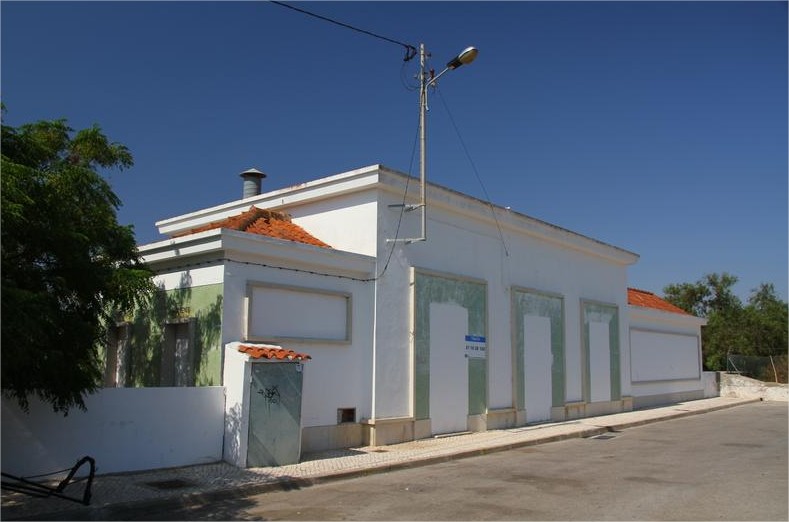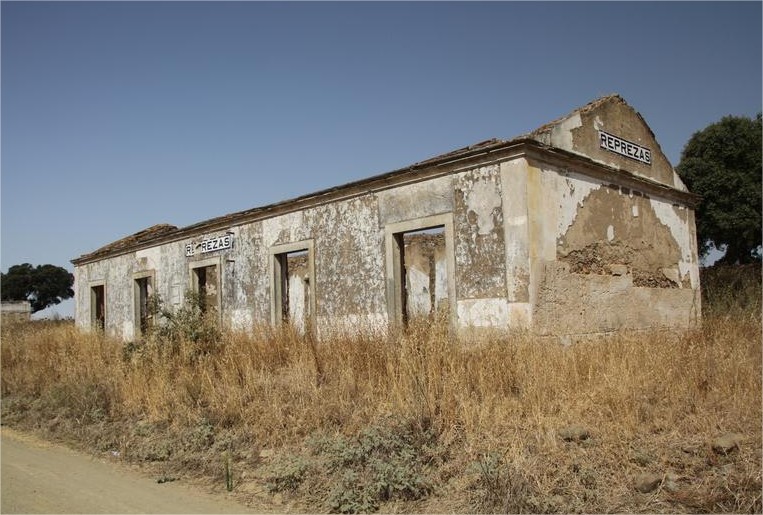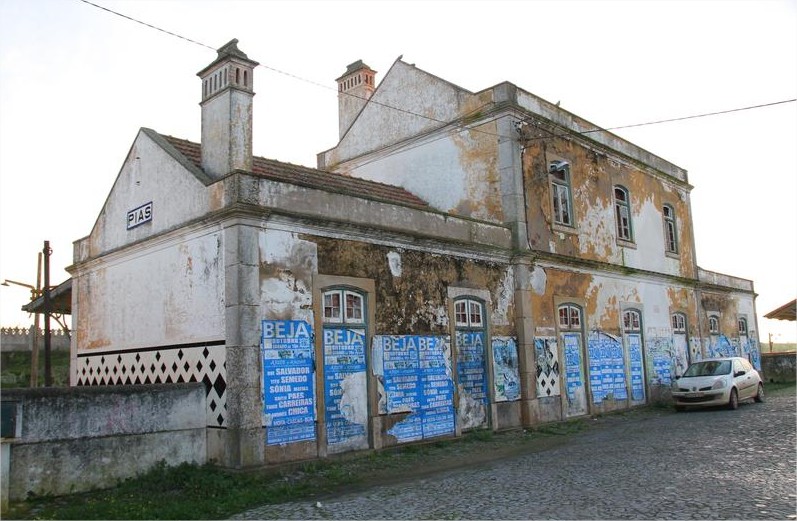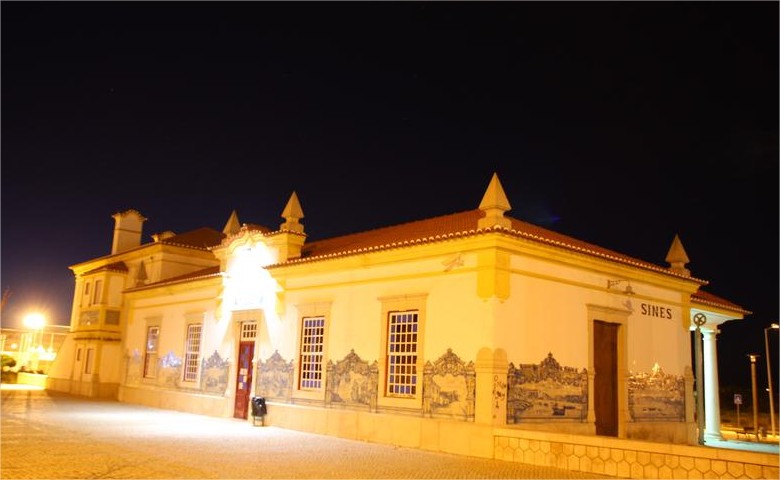The Stats
Progress Map
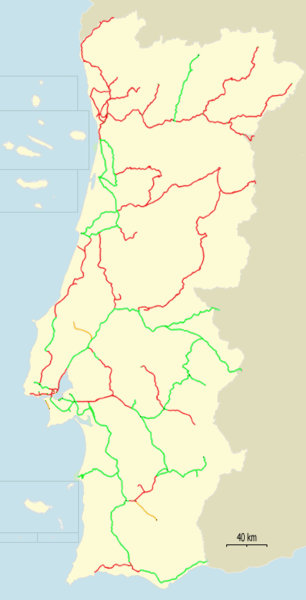 (green-done; red-to do; yellow-industrial)
(green-done; red-to do; yellow-industrial)
Train(station)Spotting
One day in November 2011, sitting outside a caffe talking to my wife while visiting Vila Real de Santo António, an idea popped into existence: what if we went and visited the city's train station? Not to go anywhere, not to pick someone up, but rather to look at it, see its architecture, old facilities, and perhaps glimpse a departing train? Off we went! And, indeed, we ended up looking at it as never before. Without someone to meet or a schedule to keep, many hitherto unseen details jumped at us, and we spent a really nice time there.
"What if we did this for other stations?", my wife asked. "I've always wanted to see what sorts of stations we can find throughout the country!". It didn't take long to convince me. Indeed, trains and train stations are a part of both our "mythical childhoods", even having born 300Km apart in different parts of the country. When we were young, there were few (if any!) highways, or even decent roads. Most people didn't own or use cars. As such, trains were the main way to get around, even between neighbouring towns just a few Kms away. We used them, our families used them, we knew the schedules by heart. Many times did I go to the trainstation say goodbye to my father (or to greet him back). Trains, in Portugal, were an integral part of many people's lives (alas, not anymore, but the romantic memories endure)!
Portuguese Rail
Portuguese railway appeared in the mid-nighteenth century. The first train to run in the country did so in 1856, between Lisboa and Carregado, on October 28th. The first plans to build a railway date from 1844 and in the following years several contracts were signed between the portuguese crown and different people and consortia (mostly led by portuguese nobility, but a few englishman and spanish were involved as well). It was a troubled start. All those stakeholders led to a mess of unfullfilled contracts and even incompatible railways (with different rolling stock and gauges) that made the creation of a proper railway network a nightmare. The crown cancelled some unfullfilled contracts and reasigned them. In 1860, the "Companhia Real dos Caminhos de Ferro Portugueses" ("Royal Portuguese Railway Company") is created to better oversee things. In the following years the Company took over existing railways and rationalized the infrastructure and services. By 1900, most of the railway network was in place, including several connections with Spain (the connection at Elvas-Badajoz, Linha do Leste, having been the first in 1863). Over the next couple of decades some small stretches of railway were build or completed, but, in essence, the network we'd have for the rest of the 20th century was in place.
One notorious thing was left unbuilt for over 140 years: there wasn't a way for the train to cross the Tagus river, at Lisbon, effectively separating the Linha do Sul (South Line) and those departing from it from the rest of the network. I real thorn on my side, everytime I wanted to go home as a student. A 1/2h boat ride awaited those that needed to cross this noth-south "barrier", and then wating for a train at the other end.
As it was, as it is
Sadly, the Portuguese railway network hasn't endured well. Some portions have been subject to huge renovation efforts, and are still part of the backbone of the country's transportation system. But several lines have closed altogether. The first bach of lines to close, always advocating "economic reasons", was around 1989-1990. In the past decade, due in no small part to our recent inclusion in the European Union (well, it was called the European Economic Community, back then...). Much needed roads and highways were built at that time. Not all were finished in that period (in fact, 10 years later several important ones were still being constructed), but to give an idea of the importance of this, before the highway network was in place, it took a bus around six hours to go from Lisbon to Faro (300Km). Nowadays it takes around three... A song by famous 80s' portuguese rock band Xutos e Pontapés famoulsy states the time between Lisbon and Bragança (480Km) to be nine hours. Nowadays it will take you four and a half... With better roads, and economic prosperity (more people own cars), came a decrease in the use of trains, leading some lines to close.
The second large batch of lines to close happened in 2010-2012, under the aegis of the financial crisis and "austerity" policies, leaving the network a pale shadow of what it once was. One cannot help but wonder if few people using trains are a cause or an effect of current policies, as it was often the case when they severely degrade the service (fewer trains, poorer schedules, longer trips, etc.), leading to fewer people using them, which then is used as a justification for closing the lines...
Even if part of the network hadn't closed, it would not have lived up to its full potential. Indeed, many more lines were planned and never built! The Republican Revolution of 1910 and then the First and Second World Wars severly hindered the construction plans. I had always wondered why certain lines didn't connect to each other, why certain parts of the country appeared so under-served, or why it appeared that if only they had built 20 more Km in this or that line it would make for a much useful and connected network. Truth is, as I found out once I started this project, many of those lines were indeed planned, but never built! Check it out on the map to the left. Press the buttons and compare what Was actually built, what Is nowadays, and was was Supposed to Be. What a difference!
Station Hunting (on paper)
We visit several stations along a railway line in each session. No other thing would make sense, especially for lines that require us to stay somewhere overnight. The first thing to do, though, starts around a week earlier: finding exactly where the stations are, and how to get there! Nowadays, the default way of doing it would be to use some kind of online mapping and navigation service. I usualy favor Google Maps. Alas, Google Maps has proven to be both a blessing and a curse, when planning these trips... The first problem has to do with the woefully incorrect locations it gives for many, many stations. The first image below shows where Google thinks the Pinheiro da Bemposta station (Linha do Vouga) is, and where it actually is (the pin)... This happens for roughly 20%-30% of stations. And then there are delightful details such as the one on the second image: which of those is actually Dagorda-Peniche (Linha do Oeste)? Again, expect that kind of thing to happen more often than you'd expect...
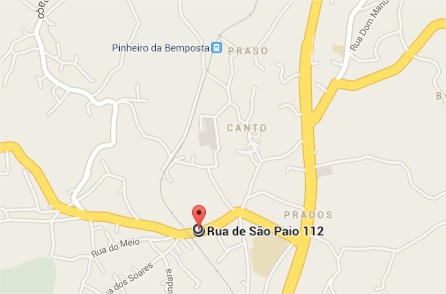
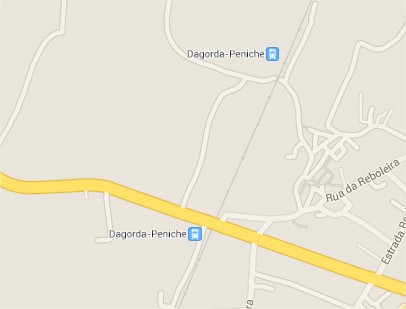
Also, can you spot the differences between the two roads below (second one from Google Street View)? They are depicted the same on Google Maps (a narrow, white, road)! And the leftmost isn't all that bad, compared to what we've found on the ground. Actually, the third photo (yes: countryside and a stream...) is also shown the same way on Google Maps (it has been corrected since we went there, luckily!). I have a mental modal for what is going on here: where Google doesn't have better information, it does image processing on the satellite images. So, walking paths across farmland become roads, and buildings close to railway lines become stations. Not at all trustworthy outside cities...
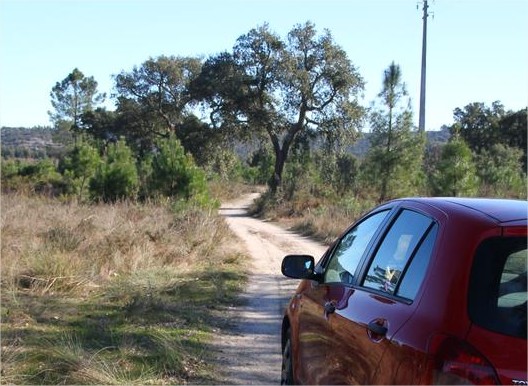
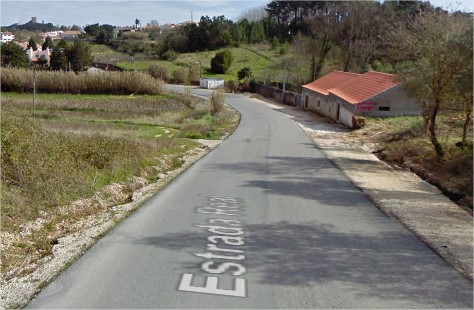
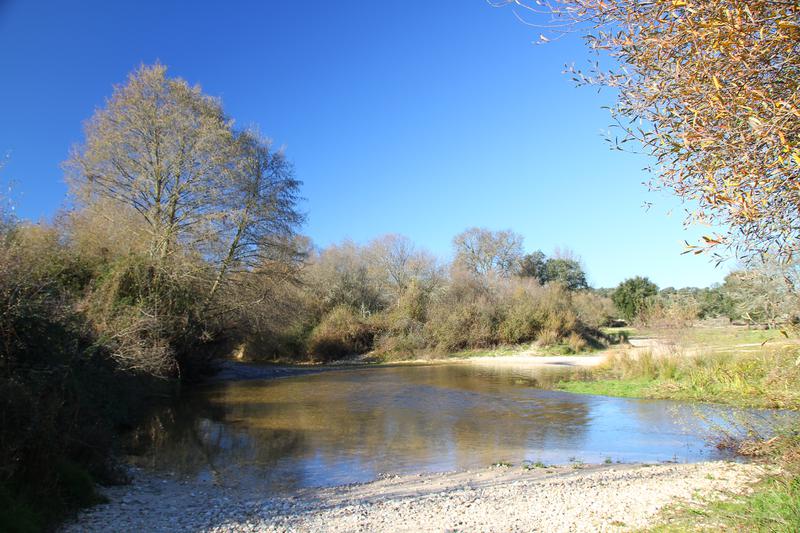
And that is for still (or until recently) operating stations. Good luck finding a station that closed 25 years ago in there... So, in short, the "21st Century way" of getting places, GSP navigation, won't really help you here... The detective work that starts one week before starts with the list of all stations and stops on Wikipedia. I also own several books on the portuguese railway. This gives me a good estimate of where the line was. Then, I look for clues about the station on Google Maps, Bing Maps, Apple Maps and OpenStreet Map. Some of those sources have information about some stations, some about others. Then, of course, the maps themselves are not to be trusted, so I must use the satellite view to check whether the stations really are where the mapping software things they are, or to find them in the first place, if they no longer show. In most cases the railway tracks are still visible (although in some cases they have been ripped off, making everything more difficult) and I can follow the traks looking for the stations (or their ruins, as the case may be). And, ultimately, in some cases we'll need to check, when we're out on the ground, if we're looking in the right place, and ask some of the locals for directions. Where there are any...
The Middle of Nowhere
I remember, as a child, riding the train from Vila Real de Santo António to Faro (Linha do Algarve), stopping in what seemed the middle of nowhere. Looking out the window, all I could see was countryside. "Why are we wasting time stopping here?" - I always wondered. Throughout this project I've found many other stations and halts in the middle of nowhere. Actually, little did I know how easy and approachable that halt between Vila Real and Faro was, compared to what I've seen since. Take a look at the map below. I've highlighted the position of the Cruzeiro train halt (Linha do Corgo). That seeminly not too bad nort-south road is actually the railway line. The east-west path with the switchbacks seems to be a way to get there... Until you see that it is actually a footpath around the mountain through vineards on its slopes! Probably not even a tractor can get through safely. Actually, take a look at the third image, to see the mount I'm talking about...
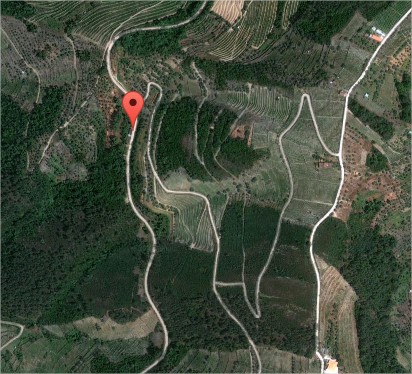
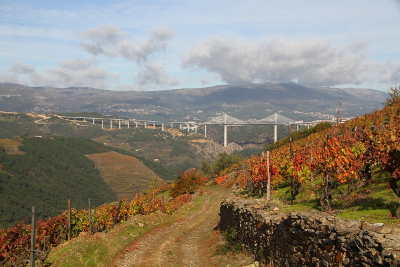
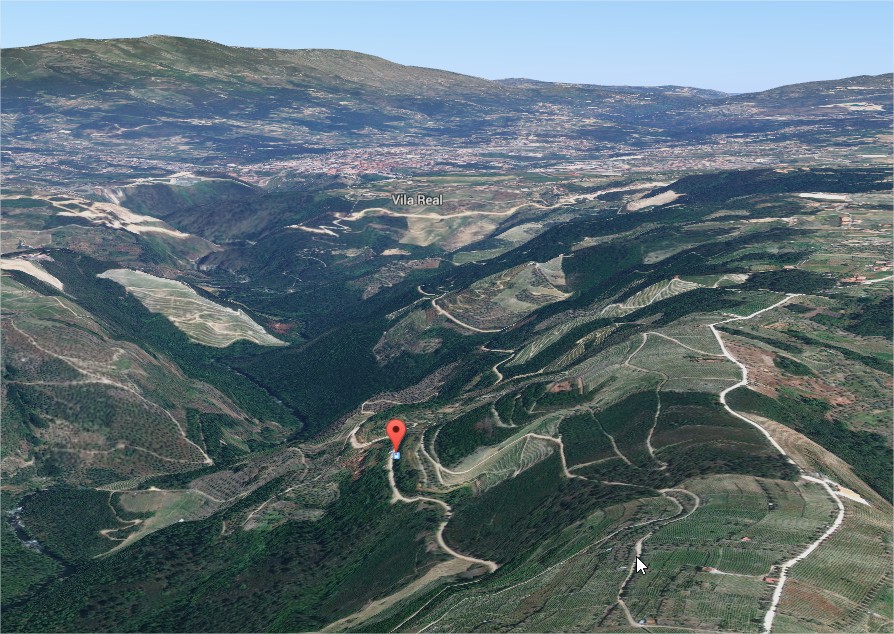
So, getting there turned out to be impossible. It would have implied a 1/2h walk on foot, which we didn't have the time for, and would probably be too dangerous to do with the kids, anyway. But it is listed for future travels... Also interestingly, try to spot the village it serves. What people were getting in and out the train there? If you haven't spotted it, don't worry: there isn't one! So, here is one of several "mystery stations": no one lives within miles of it, and to get there you needed a 1h hike through the mountains, anyway... Why on earth does it exist?
Portugal of Yesteryear
Part of the reason for those "mystery stations" is that they were built over 150 years ago, in a very different Portugal. Back then, farming had a much bigger importance than it does now. There were many more people living in the countryside, whereas now most have moved to towns or cities. So, a seemingly deserted area, nowadays could have been bustling with people 150 years ago. This project has been a great eye opener in terms of portuguese history and the dynamics of certain regions throughout the years. Even if people didn't live there, maybe there were large farms that needed to get their products to the city. Towns rose and fell in relevance. In the Linha do Leste, the town of Arronches (fairly important in its surroundings, with around 3500 inhabitants nowadays) has a small halt several kilometers from it (image on the left). Close by, the village of Assumar (650 inhabitants) has a large station complex, with several buildings, right outside the village (image on the right). It makes no sense until you look closer and realize that Assumar existed since before the country's founding (in 1139), was fortified with walls and a castle since the 14th century (none of which still exists), was ruled by a count and was head of the municipality from 1288 to 1836.
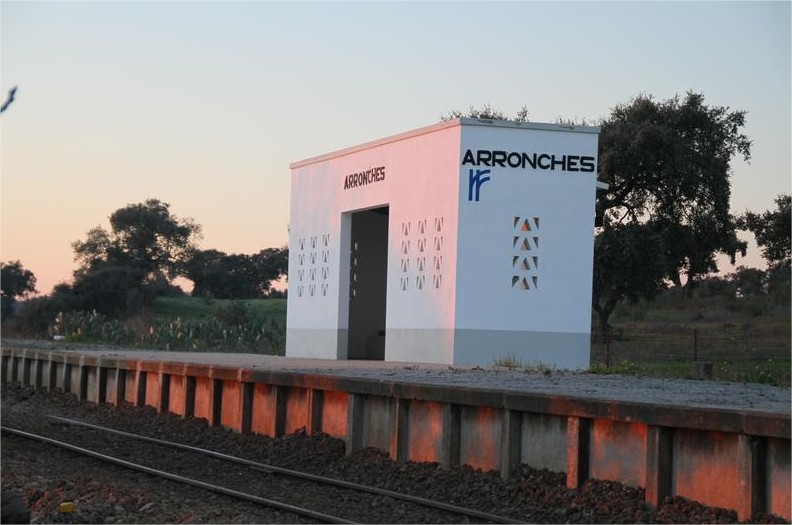
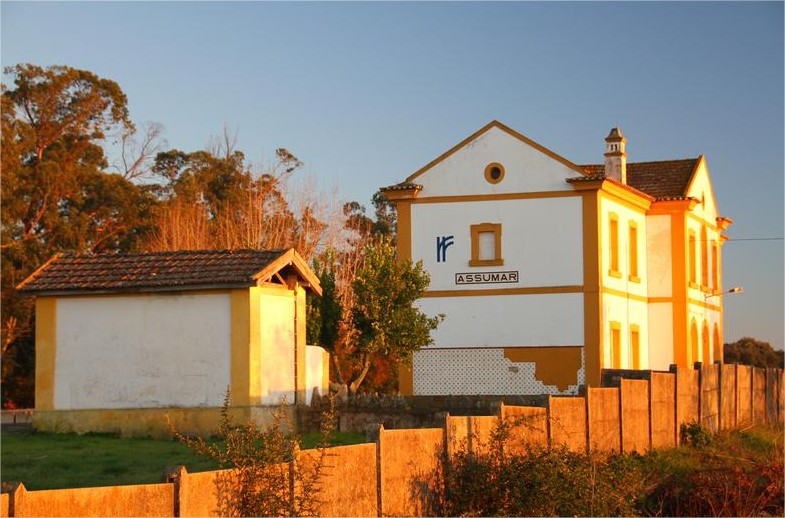
The Stations
So... the stations... what this project is all about! We've seen how the it is allowing us to get to know Portugal, its history and culture. But the stations themselves are awesome! There are different styles, different decorations, different support buildings. It's been great!
Architecture
Different stations from different parts of the country sometimes have very differnt architectonic styles. It is not uncommon for different lines, in different regions, to have different looks. But, also, more often than not, it is the time when they were built that determines their look.
The Vila Real de Santo António station, where our project started, is not the original building, but rather a new one inaugurated in 1945. It was designed by the architect Cottinelli Telmo, as were several others from that period and has a very distinct look. Stations in the Alentejo are older (the Linha do Leste was one of the first to be built) and (mostly) share similar looks (the second photo below is Sousel, in Ramal de Portalegre). If we move farther north, stations in the Ramal de Aveiro and Linha do Vouga (the last surviving narrow gauge line) look very different, many with slanted roofs, probably due to more inclement weather conditions (below: Eixo, in Ramal de Aveiro). And then, there are the brutally efficient new stations, created or renovated in the last decade, with little aesthetic appeal but that, probably, are more efficient to shuffle cattle... er... passengers from one place to another with as little maintenance effort to the company as possible... (below: Cacia station, Linha do Norte). These are just a few samples of the huge diversity we've been finding. It's been a blast!
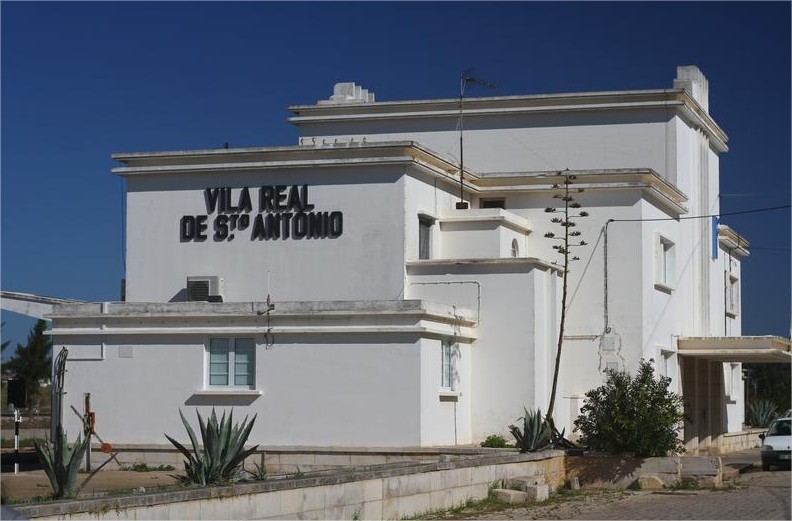
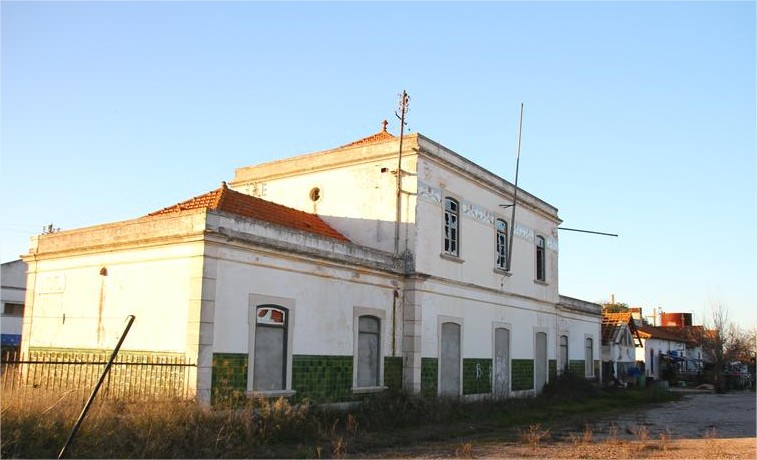
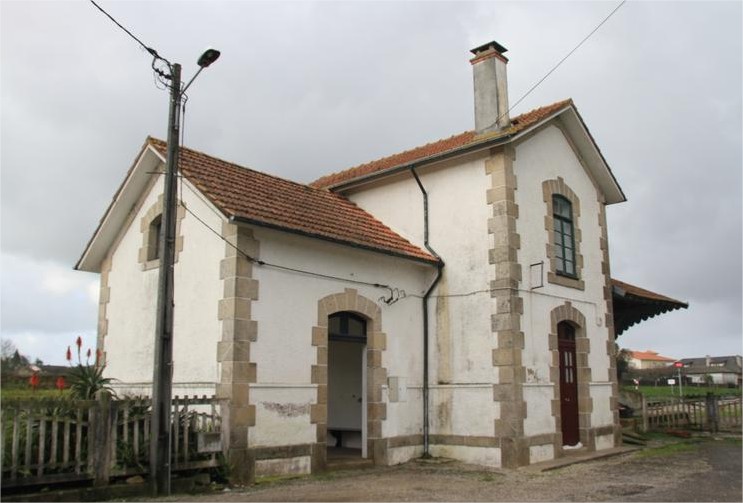
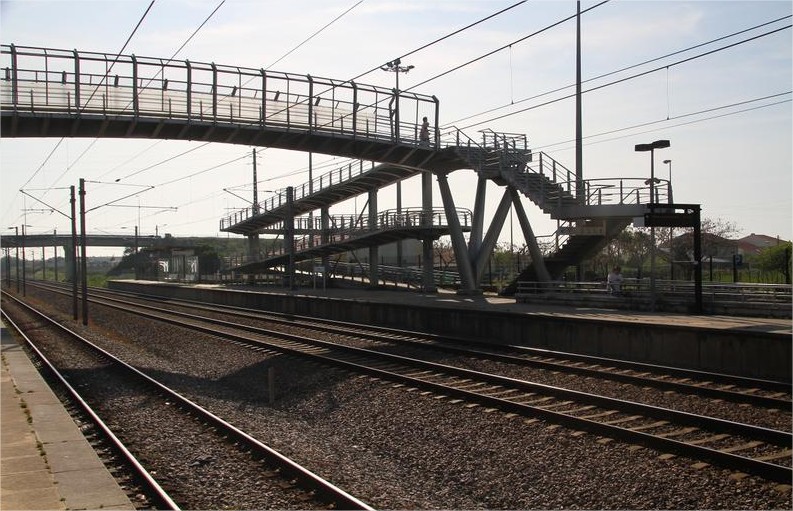
The Clocks
There are some things you can expect to find in all train stations. A platform, some benches, timetables, and a clock. And, indeed, there is a very distinctive clock used in stations throughout the country. Newer stations have more modern models but the originals still exist (and work!) in many places. Some have been painted, restored in different ways, and in some cases they are just utterly and irreparably broken. But it is one of the things we look for in every station we visit.
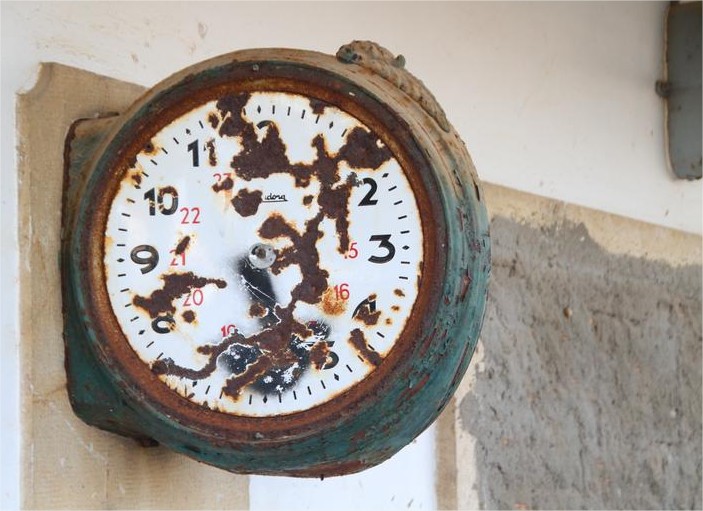
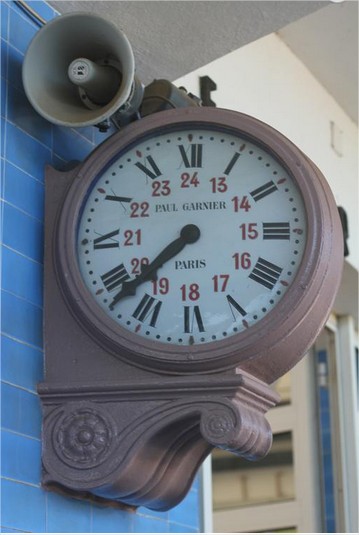
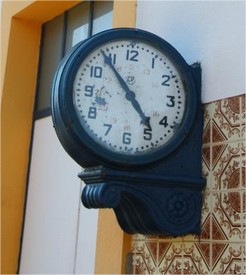
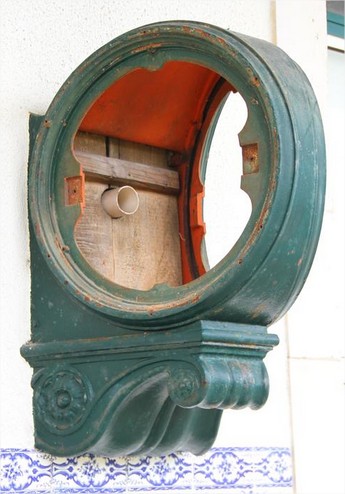
Ceramic Tiles
Many stations are decorated with ceramic tiles. The most common use are geometric patterns, repeated in the bottom half/third of the buildings. We can find the same pattern in several stations, sometimes in different colors, but essentially the same. But, sometimes, we can find entire pannels of ceramic tiles, depicting the life and monuments of the area where the station is. The life and monuments existing 100 years ago, that is! Again, a great way to see how things have evolved in the past century! Below, in this order: Ovar (Linha do Norte); Beja (Linha do Alentejo); Vale do Peso (Ramal de Cáceres); Cabeço de Vide (Ramal de Portalegre).
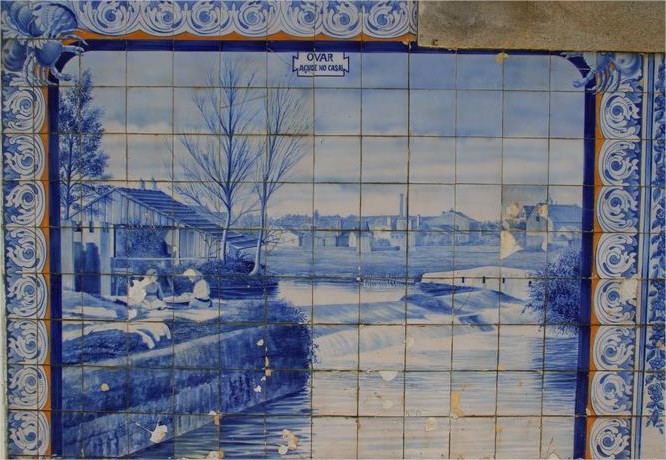
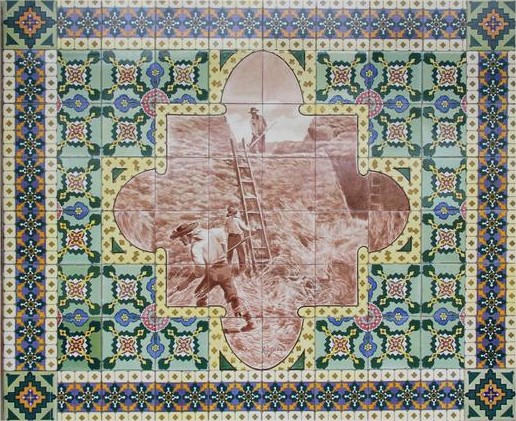
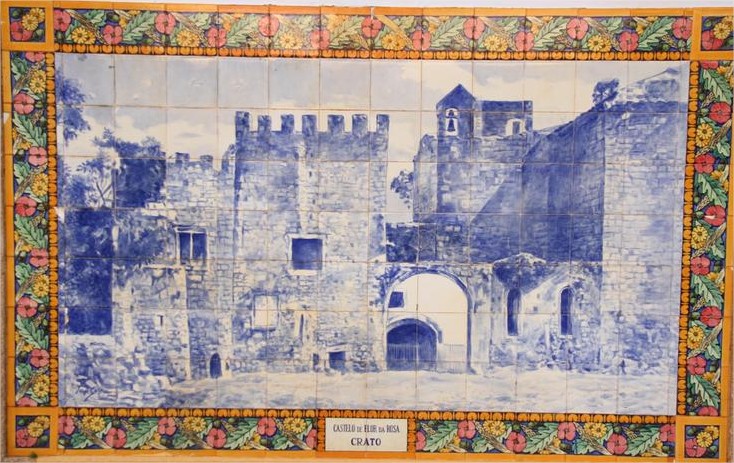
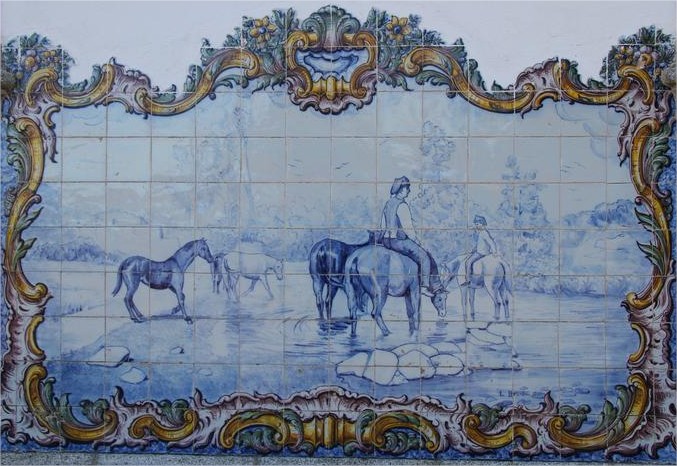
Water Towers
Nowadays trains run on diesel or electricity. But that wasn't always the case. At the beginning, and for decades, they had steam engines. To get steam, you need coal to burn and water to boil. So, many stations had water deposits right next to the line, where trains could resupply in order to keep on moving. We always look out for those, as they appear in many differnt styles. One constant, though: they all have the station name written on them in large letters. Below: Alcácer do Sal (Linha do Sul); Ermidas-Sado (Linha do Sul); Vila Real (Linha do Corgo).
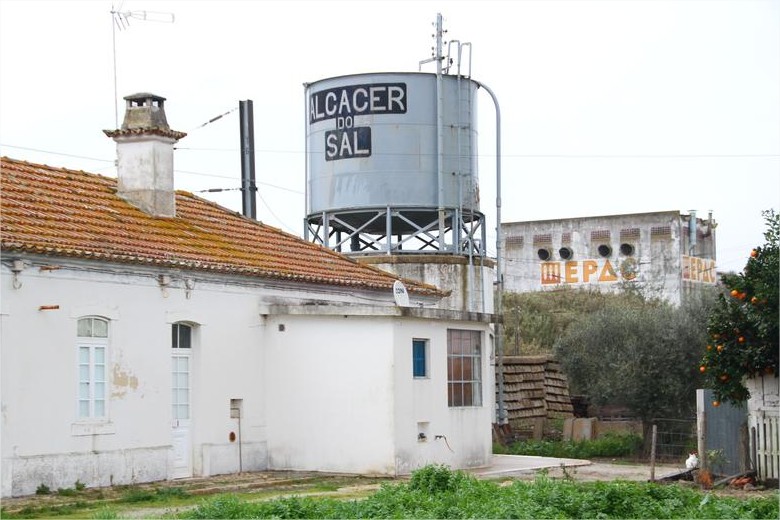
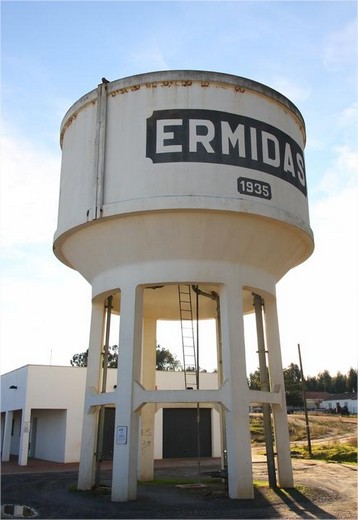
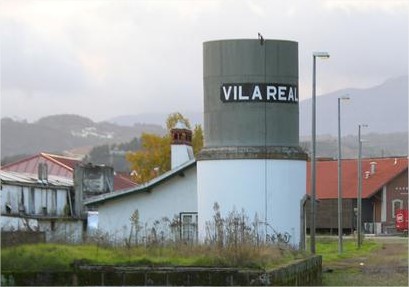
Economics of the Region
Another thing you can guess by looking at the station and its surroundings is what industry or other economic activity took place around them. When trains were the preferred way to move products from where they were produced to where they are consumed, you'd get infrastructure, on the stations, to help load and unload them. In Beja (Linha do Alentejo, below, left), Estremoz and some others, grain silos loom not too far away from the main building. At Ponte de Sor (Linha do Leste), there is no mistaking the importance of the timber business. At Ramalhal-Valoro you find the infrastructure for loading livestock feed.
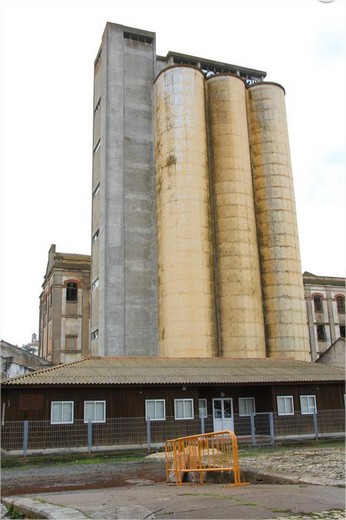
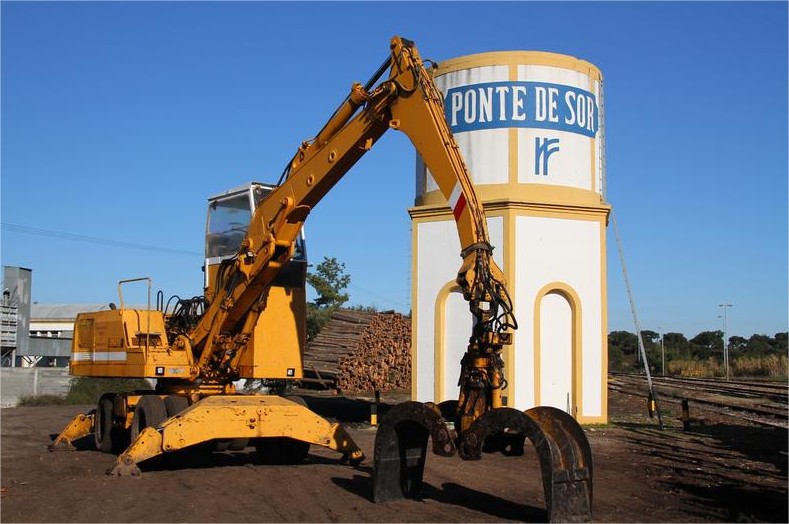
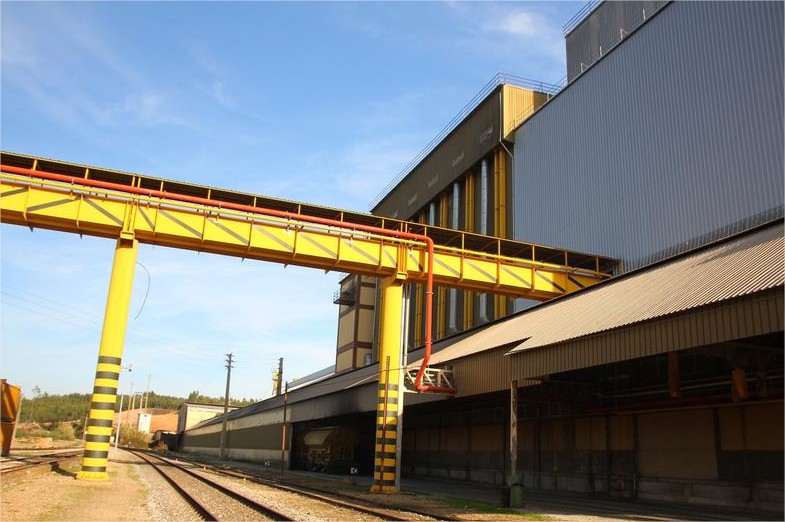
Decay
Finally, and sadly enough, a note about the sorry state of preservation many stations find themselves in. Clearly, Refer (the company that onwns and manages them) cares little about keeping them in working order. Many of those still in service have been completely boarded up. People board the train and buy the ticken on board, and the station building is little more than a marker of where to board (first below: Monte Gordo station, Linha do Algarve). Others are simply abandoned and slowly crumble away (second and third below: Represas, Linha do Alentejo; Pias, Ramal de Moura). Several now have people living in them (probably illegally) in precarious conditions. Also, infuriatingly, in certain rural areas landowners simply decided to annexate land belonging to Refer, and close off all accesses to the station infrastructure! Anything goes, when no one is looking... On a brighter note: in some rare cases they were bought or leased from Refer and are kept and maintained by businesses or city halls. Several are restaurant or bars. Below, the former Sines station is now part of the Sines School of Arts.
